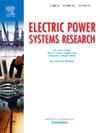基于粒子群优化(PSO)和扰动观测(P&O)的混合全局最大功率点跟踪控制方法
IF 4.2
3区 工程技术
Q2 ENGINEERING, ELECTRICAL & ELECTRONIC
引用次数: 0
摘要
在部分遮阳条件下,光伏系统的P-V曲线具有多峰特性,这将降低传统最大功率点跟踪(MPPT)算法寻找全局最大功率点(GMPP)的有效性。粒子群优化算法具有良好的全局搜索能力,但存在收敛速度慢的问题。PSO与扰动与观测(P&;O)算法相结合,具有GMPP搜索能力强、收敛速度快、计算简单等特点,提高了MPPT的精度。本文提出了一种改进的PSO-P&;O混合算法。采用了一种新的初始化粒子方法来减少粒子数量,并采用了一种新的PSO到P&;O的过渡方法来加快收敛速度。此外,为了避免光强改变时系统下降到局部最大功率点(LMPP),采用了重新初始化的方法。通过MATLAB仿真验证了该算法的可行性和有效性。仿真结果表明,该算法可以在5 ~ 6次迭代中找到GMPP。在两种不同光强条件下,MPPT效率分别达到99.82%和99.98%。因此,该算法可以更准确、更快速地找到最大功率点(MPP),从而提高部分遮阳条件下光伏系统的效率。本文章由计算机程序翻译,如有差异,请以英文原文为准。
A hybrid global maximum power point tracking control method based on particle swarm optimization (PSO) and perturbation and observation (P&O)
The P-V curve of photovoltaic systems has multi-peaks characteristics under partial shading conditions, which will reduce the effectiveness of the traditional maximum power point tracking (MPPT) algorithms to find the global maximum power point (GMPP). The particle swarm optimization (PSO) algorithm has good global search ability, but may suffer from low convergence speed. The combination of PSO and perturbation and observation (P&O) algorithms can behave strong GMPP search ability, fast convergence and simple calculation, and thus can improve the accuracy of MPPT. In this paper, an improved PSO-P&O hybrid algorithm is proposed. A new initialization particle method is employed to reduce the number of particles and a novel PSO to P&O transition method is adopted to speed up convergence. Moreover, reinitialization is used to avoid the system dropping to the local maximum power point (LMPP) when the light intensity is changed. The feasibility and effectiveness of the proposed algorithm is verified by the MATLAB simulation. The simulated results show that the GMPP can be found in 5–6 iterations by the proposed algorithm. The MPPT efficiency reaches 99.82 % and 99.98 % respectively under two different light intensity conditions. Consequently, the proposed algorithm can find the maximum power point (MPP) more accurately and quickly, and therefore can improve the efficiency of photovoltaic system under partial shading conditions.
求助全文
通过发布文献求助,成功后即可免费获取论文全文。
去求助
来源期刊

Electric Power Systems Research
工程技术-工程:电子与电气
CiteScore
7.50
自引率
17.90%
发文量
963
审稿时长
3.8 months
期刊介绍:
Electric Power Systems Research is an international medium for the publication of original papers concerned with the generation, transmission, distribution and utilization of electrical energy. The journal aims at presenting important results of work in this field, whether in the form of applied research, development of new procedures or components, orginal application of existing knowledge or new designapproaches. The scope of Electric Power Systems Research is broad, encompassing all aspects of electric power systems. The following list of topics is not intended to be exhaustive, but rather to indicate topics that fall within the journal purview.
• Generation techniques ranging from advances in conventional electromechanical methods, through nuclear power generation, to renewable energy generation.
• Transmission, spanning the broad area from UHV (ac and dc) to network operation and protection, line routing and design.
• Substation work: equipment design, protection and control systems.
• Distribution techniques, equipment development, and smart grids.
• The utilization area from energy efficiency to distributed load levelling techniques.
• Systems studies including control techniques, planning, optimization methods, stability, security assessment and insulation coordination.
 求助内容:
求助内容: 应助结果提醒方式:
应助结果提醒方式:


